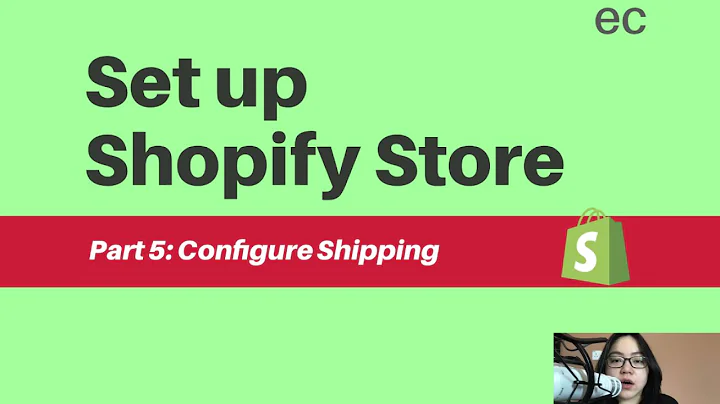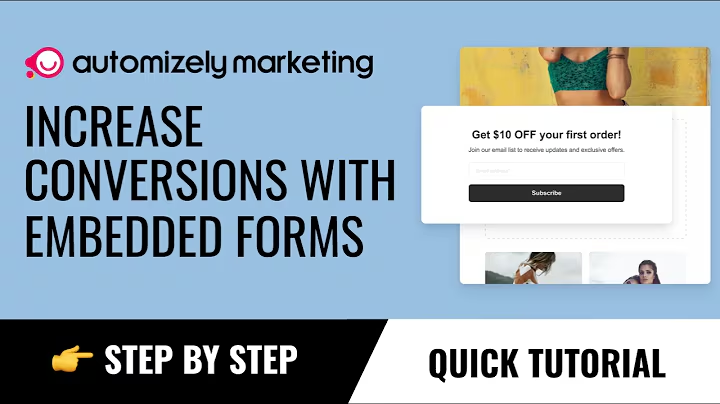Master On-Page SEO: A Step-by-Step Guide
Table of Contents:
- Introduction
- What is On-Page SEO?
- The Importance of On-Page SEO
- On-Page SEO Checklist
4.1 Performance Optimization
4.2 Crawling and Indexing
4.3 Keyword Targeting
4.4 Content Optimization
4.5 Image Optimization
4.6 Video Optimization
4.7 Link Optimization
4.8 User Experience Optimization
4.9 Local SEO Optimization
4.10 Structured Data Optimization
4.11 EAT Optimization
4.12 Goal Completions
4.13 Design and User Interface Optimization
- FAQ
Article:
On-Page SEO Checklist: The Ultimate Step-by-Step Guide
In today's digital landscape, on-page SEO is an essential aspect of any successful online marketing strategy. By optimizing the various elements on your website, you can improve its visibility in search engine results and attract targeted organic traffic. But where do you begin? And how can you ensure that you're covering all the necessary bases for optimal on-page optimization?
In this comprehensive guide, we will walk you step-by-step through an on-page SEO checklist that covers everything you need to know to achieve a perfectly optimized page. From performance optimization and keyword targeting to content creation and user experience, we will cover it all. By the end of this guide, you will have a clear understanding of how to optimize your website for search engines and drive targeted traffic to your pages.
1. Performance Optimization
Performance is a critical factor in on-page SEO. If your website takes too long to load or has technical issues, it can negatively impact user experience and your search engine rankings. Here are some steps you can take to optimize your website's performance:
- Set up Google Analytics tracking to measure your SEO performance and monitor organic search traffic and conversions.
- Track your primary keyword phrase to ensure you're targeting the right keywords and make adjustments as necessary.
- Ensure that your website is easily crawlable by search engine spiders. Check your robots.txt file and use tools like Screaming Frog SEO Spider to identify and resolve any crawling issues.
2. Crawling and Indexing
Crawling and indexing are fundamental processes in on-page SEO. If search engine spiders can't access your page or if it isn't properly indexed, it won't appear in search results. Here's what you need to do to ensure optimal crawling and indexing:
- Use tools like Screaming Frog SEO Spider to check your page's crawlability. Look for a 200 status code and ensure there are no issues blocking search engine crawlers.
- Check if your page is indexable by copying the URL and pasting it into Google. If it doesn't show up, investigate whether the page is using the Noindex tag or if it's buried too deep within your website's architecture.
- Acquire backlinks to your page to increase the chances of it being indexed. The fetch as Google tool can also help expedite the indexing process.
3. Keyword Targeting
Keyword targeting is at the core of on-page SEO. By choosing the right keywords and strategically incorporating them into your content, you can improve your page's visibility in search results. Here's how to ensure you're targeting the right keywords:
- Use tools like Ahrefs Keyword Explorer to qualify and analyze your target keywords. Eliminate keywords with high difficulty scores or that don't align with your website's authority.
- Compare your website against ranking competitors in terms of domain rating, backlinks, and word count. This data will help you identify what you need to compete for your target keyword.
- Avoid keyword cannibalization by targeting one primary keyword per page. If closely related keywords have different intents, consider using the Hub and Spoke model to target them separately.
4. Content Optimization
Content optimization encompasses various factors, including keywords, copywriting, media usage, and user experience. By optimizing these aspects, you can improve your page's rankings and increase user engagement. Here's how to optimize your content:
- Ensure your primary keyword is in the title tag, as this is an essential on-page optimization factor.
- Make your title tag click-worthy by improving its clickability. Use compelling language, add modifiers like "best" or "top," and make sure your title tag stands out in search results.
- Write your title tag and meta description to accurately reflect the content of your page and entice users to click through.
- Incorporate your primary keyword, LSI keywords, and synonyms into your copy to improve topical relevance and help search engines understand the content better.
- Break up your copy into short paragraphs and use headings and subheadings to make it scannable and easy to read.
- Ensure your content is engaging by writing in a conversational style and incorporating relevant stories and examples.
- Use bullet points, numbered lists, and multimedia elements to enhance readability and user engagement.
- Regularly review your content to ensure accuracy, update outdated information, and make necessary changes to improve search engine rankings.
5. Image Optimization
Image optimization is often overlooked in on-page SEO, but it can significantly impact user experience and page load times. Here are some steps to optimize your images:
- Use unique and high-quality images to make your page more engaging and attractive to users.
- Compress your images to reduce file size and improve page load speed. Tools like Optimizilla can help you compress your images without sacrificing quality.
- Use descriptive file names for your images based on their contents. This helps search engines understand what the image is about and improves your page's search engine rankings.
- Use descriptive and accurate ALT tags for your images. ALT tags help search engine spiders understand the content of an image and improve the accessibility of your page.
6. Video Optimization
Video content has become an increasingly popular medium, and optimizing your videos can enhance user engagement and drive more traffic to your page. Here's how to optimize your videos:
- Ensure your videos are relevant to your page's content and targeted keywords.
- Create unique and high-quality videos to differentiate your brand and improve user experience.
- Host your videos on platforms like YouTube or Vimeo, as they offer visibility in both search engine results and their respective platforms.
- Optimize your video's title to match your page's targeted keyword.
- Make your videos responsive and easily viewable on all devices.
- Wrap your videos with structured data to help search engines understand their content better.
7. Link Optimization
Link optimization involves internal and external links, both of which play a crucial role in on-page SEO. Here are some steps to optimize your links:
- Use internal links to improve your site's authority, indexability, and crawlability. Ensure that your internal links use descriptive anchor text and are optimized based on first link priority.
- Use external links to build trust and credibility on your page. Be sure to link to relevant and reliable sources, and consider adding NoFollow tags to affiliate, sponsored, or paid links.
- Ensure that all your links open in a new window to keep users on your page and improve user experience.
- Regularly check for broken links on your page using tools like Screaming Frog SEO Spider and fix them promptly.
8. User Experience Optimization
User experience is a critical factor in on-page SEO, as search engines prioritize pages that offer a positive, user-friendly experience. Here are some steps to optimize your page's user experience:
- Ensure that your page loads quickly, ideally in less than three seconds. Use tools like Pingdom and GTmetrix to monitor and improve your page's loading speed.
- Make your page responsive and mobile-friendly to accommodate users' preferences for mobile browsing.
- Install an SSL certificate on your website to provide a secure browsing experience for users. SSL certificates are also a ranking factor and can improve your page's search engine performance.
- Use legible fonts and font sizes to make your content easy to read on all devices.
- Avoid aggressive interstitials and ad placements that disrupt user experience. Focus on creating a user-friendly and engaging environment.
- Display your address prominently on your page, especially if you're targeting local SEO. Consider using structured data to enhance your address's visibility and improve your page's search engine rankings.
9. Local SEO Optimization
If your business has a physical presence or targets local customers, local SEO optimization is essential. Here's how to optimize your page for local SEO:
- Ensure that your address is prominently displayed on your page, either in the body or in the footer. Be careful with multiple locations to avoid displaying the address site-wide.
- Use structured data to mark up your address and help search engines better understand your location and business details.
- Include schema markup for local businesses to provide users with additional information and improve your page's visibility in local search results.
10. Structured Data Optimization
Structured data helps search engines understand the content and relevance of your page. Here are some steps to optimize your structured data:
- Apply structured data to your address to improve local SEO and provide search engines with valuable information about your location.
- Use structured data to highlight other important aspects of your page, such as reviews, recipes, events, products, and more.
- Ensure that your structured data is set up correctly and test its validity using Google's Structured Data Testing Tool.
By following this comprehensive on-page SEO checklist, you can ensure that your website is fully optimized for search engines and user experience. Remember, on-page SEO is an ongoing process, so regularly review and update your pages to stay ahead of the competition and attract targeted organic traffic. Implement these strategies, and you'll significantly improve your page's search engine rankings, visibility, and overall online presence. Happy optimizing!
FAQ:
Q: What is on-page SEO?
A: On-page SEO refers to the optimization of elements within a webpage to improve its visibility and ranking in search engine results pages. It involves optimizing various factors such as content, keywords, images, links, and user experience.
Q: Why is on-page SEO important?
A: On-page SEO is essential because it helps search engines understand your webpage's content and relevance, improves your page's visibility in search results, and attracts targeted organic traffic. It also enhances user experience and can lead to higher conversion rates and engagement.
Q: What are some key elements of on-page SEO?
A: Some key elements of on-page SEO include keyword targeting, content optimization, image optimization, link optimization, user experience optimization, and local SEO optimization. Each element plays a crucial role in improving your page's search engine rankings and attracting targeted traffic.
Q: How often should I review and update my on-page SEO?
A: On-page SEO should be an ongoing process. It's recommended to regularly review and update your pages to ensure they're optimized for the latest search engine algorithms and user preferences. Stay up-to-date with industry trends and competitor analysis to stay ahead of the competition.













